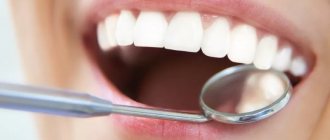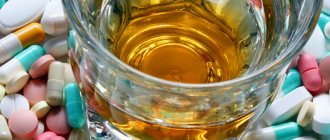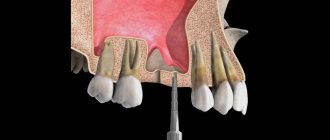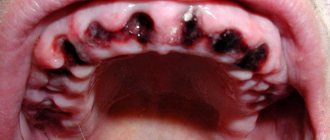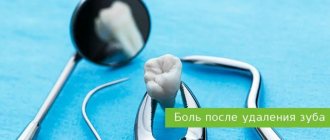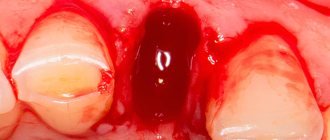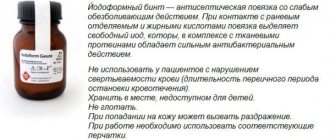Main activities after extraction
As soon as the tooth is removed, the doctor treats the empty socket and places a cotton swab soaked in the medicinal composition into it. In some cases, stitches may be required. On the recommendation of the dentist, the tampon is removed several hours after the manipulations.
During this time period, it is forbidden to eat, smoke, drink, talk, that is, it is better not to open your mouth at all. You should also not touch the hole with your fingers or insert foreign objects into it. To disinfect (disinfect) the oral cavity, you should use Furacilin, Miramistin, Chlorhexidine, Chlorophyllipt.
Important! To prevent postoperative bleeding, you should not bend over, lift heavy objects, visit saunas, or take hot baths.
Upon completion of the extraction, patients can be prescribed antibacterial compounds in various dosage forms - tablets, capsules, drops, local solutions and applications
Indications for antibiotic therapy
Antibiotics after tooth extraction are prescribed if the operation was carried out against the background of a purulent-inflammatory process in the socket, on the mucous membrane or gum (for example, gingivitis, periodontitis). In case of flux with a cyst, an antibiotic should be taken to stop the inflammatory process and stop the growth and reproduction of its causative agents - pathogenic bacteria.
Important! Antibiotics after tooth extraction do not cope with pain, swelling and swelling, so they are supplemented with anti-inflammatory and antihistamines. If extraction was necessary for prosthetics or installation of braces (rarely practiced), it is enough to treat the oral cavity with antiseptic solutions. It would be advisable to take antibiotics after tooth extraction only if there are symptoms of an inflammatory process.
It is necessary to take antibiotics after wisdom tooth removal in the following cases:
Antibiotics for tooth flux
- infection of a postoperative wound (poor oral hygiene, stones, a large number of teeth affected by caries);
- suppuration;
- the area of the wound surface exceeds 1 cm2;
- immune failure in the body;
- diabetes mellitus (the course of this disease is accompanied by slow wound healing).
In addition, taking antibiotics after wisdom tooth removal is required if the wound bleeds; in parallel, the surgeon performed an intervention on the bone tissue; osteoplastic materials were used to avoid rejection.
Causes
There are several reasons why a dental cyst develops. The main reason is the activity of pathogenic microorganisms in a closed dental space; the following risk factors contribute to this:
- severe pathology, lack of timely treatment and incorrect treatment of dental diseases - caries, periodontitis, pulpitis;
- infectious complications after tooth filling, implantation procedures - in such cases, the doctor removes not only the cyst, but also the crown or implant, this avoids relapse;
- complications during teething, especially when wisdom teeth erupt - dental tissues injure the gums, bacteria get into microcracks,
- microorganisms also enter wounds that form due to mechanical damage to teeth;
- Nasopharyngeal diseases – infections in the nose and throat can spread to the oral cavity.
To provide adequate treatment, it is necessary to accurately determine the cause of the development of a dental cyst; based on it, the dentist will prescribe suitable therapy. So, in cases of injury, treatment consists of removing the cyst and tissue regeneration, but if the cyst is a complication of another disease, then in addition to removing the vesicle, the patient will be prescribed treatment for the underlying disease.
How to select medications
The answer to the question of whether you need to take antibiotics after tooth extraction has been received. Now it is necessary to find out what means should be taken in this or that case. The selection of a drug for a child or adult patient is carried out based on the general condition of the patient’s body, the presence (absence) of an allergic reaction to certain medications, the localization and degree of the inflammatory process.
Antibiotics after tooth extraction must meet the following requirements:
- medicinal components must penetrate well not only into the gum tissue, but also into the bone tissue;
- ensuring a cumulative effect for prolonged action of the drug;
- maintain the required concentration for at least 8 hours so that the patient can conveniently take medications (not “get out of line” with the therapy regimen);
- Aerobic and anaerobic microflora must be susceptible to the antibiotic;
- minimum side effects, minor toxic effects on the body;
- the product must be suitable for outpatient treatment.
Inflammatory processes, bacterial infections, and other associated dental problems are the main indications for antibiotic therapy after tooth extraction
Types of dental cysts
Tooth cysts have different classifications, each of which is formed according to certain characteristic parameters of the pathology.
According to the nature of the disease, they are distinguished:
- residual cysts – occur after tooth resection (removal) surgery; this is the most common type of cyst;
- retromolar – formed during severe eruption of wisdom teeth;
- radicular - cysts are located on or near the tooth root;
- follicular – at the heart of such cysts is the germ of a permanent tooth; follicular neoplasms arise as a result of poor quality care of baby teeth.
Classification of neoplasms according to their origin:
- odontogenic – arise as a result of the transition of the inflammatory process from other dental diseases;
- non-odontogenic - the causes of the development of such cysts include problems not related to the teeth and oral cavity.
Locations of cystic formation:
- anterior teeth;
- teeth that are adjacent to the nasal sinuses with their roots;
- wisdom teeth.
Drugs
What antibiotics to take after tooth extraction: the list of the most common drugs in this drug group includes Amoxil, Ampisid, Clerimed, Sulcef, Sparfloxacin. Which antibiotic is best to eliminate postoperative complications: Amoxiclav, Arlet, Vilprafen, Oflocain, Cefazolin.
Thus, the well-known name Amoxiclav belongs to an antibacterial drug that is prescribed for purulent-inflammatory processes at the site of extraction. Sumamed enjoys undeserved popularity among modern dentists - this remedy copes well with urinary and respiratory tract infections, but is practically useless for infections of the oral cavity.
Tsifran - this drug demonstrates high rates of effectiveness if extraction was carried out against the background of other dental problems (including active inflammation). If a fungal infection is added to the bacterial infection, antibiotic therapy is supplemented with Nystatin tablets, Amphotericin ointment, and Tetracycline.
In rare cases, sepsis may develop after tooth extraction. This pathological process is often a consequence of immunodeficiency conditions, poor blood clotting, poor oral hygiene and patient non-compliance with dentist recommendations.
After tooth extraction
After tooth extraction: how to speed up recovery
Tooth extraction can be indicated even for those who take care of hygiene, regularly brush their teeth, and are not susceptible to any dental diseases.
The reason for extraction may be improper growth of teeth - dystopic or impacted elements of the dentition must be removed. Supernumerary teeth should always be removed. As for teeth affected by caries or moving elements in patients with periodontal disease, the decision is made individually, based on the specifics of the clinical case. In this publication we talk about what to do after tooth extraction - how to properly care for the oral cavity, what medications to take, what to eat, whether you can drink alcohol, smoke and play sports.
How to eat properly?
After tooth extraction, the restriction on food intake lasts for a very short time. In fact, you will be able to eat your next meal almost immediately after returning home from the dental clinic. It is recommended to abstain from food for two, maximum, three hours. After this, it’s time to replenish the energy and nutrients that are needed for quick and complete healing of the wound.
You can drink even earlier - within an hour and a half after tooth extraction, you can drink a glass of mineral water or yogurt. We recommend giving up sweet soda, tea and coffee for a couple of days.
The next important question is what to eat? It is advisable to eat liquid or pureed food. The chewing load should be kept to a minimum, and therefore it is better to avoid beef steak, which requires careful and prolonged chewing. A good choice would be soup, mashed potatoes, oatmeal, omelet, cottage cheese, buckwheat porridge. If you want to add meat to your diet, first pass it through a meat grinder (in finished form).
Now let's talk about how to eat correctly? The recommendation is logical and expected - you need to chew food on the healthy side. Food particles should not get into the wound or damage the blood clot, which is an important element of healing.
When to remove a tampon?
After dental extraction, the dentist will apply a gauze pad to the wound. This will reduce bleeding and promote blood clot formation. The problem is that very soon this tampon will turn into an ideal source of nutrients for microorganisms living in the oral cavity. Simply put, it will become a breeding ground for infection.
If the tampon has not yet been removed at the dental clinic, do so immediately after returning home. Just remove the tampon carefully, otherwise there is a high risk of tearing out a blood clot from the hole. In order to properly remove a tampon, pull it not strictly up (or down), but to the side, with smooth loosening movements. This way you are guaranteed to avoid troubles that are possible when removing a clot from the hole.
What should I do if, after removing the tampon, blood continues to come out of the socket? Make the same tampon yourself, soak it in an antiseptic and apply it to the gum in the area of the hole for a couple of hours. For hypertensive patients, we recommend measuring your blood pressure. High blood pressure can cause bleeding from the socket, and therefore, if the systolic or diastolic pressure increases, you should take antihypertensive drugs prescribed by your cardiologist.
How to reduce swelling?
Simple tooth extraction is accompanied by minimal tissue trauma, but in the process of complex extraction, bone damage is much more noticeable to the body. The response to this damage may be swelling of the gums, cheeks and even half of the face on the side of the operation (tooth extraction - a surgical dental procedure).
To minimize swelling, apply cold compresses to your cheek. It's important not to overdo it here. Applications should be short-term - no longer than five minutes. Then you should take a break for about 10-20 minutes and apply the cold to your cheek again. Repeat the procedure 3-5 times. Please note that compresses are effective only in the first hours after dental extraction; there is no point in using them later.
An effective measure against edema is to take antihistamines, which are available without a prescription. These medications reduce the release of inflammatory mediators (the main one being histamine) and thereby prevent the development of edema. You need to take antihistamines (diazolin, suprastin) once a day for two or three days.
What you definitely should not do after tooth extraction is to heat the area of the surgical wound. Do not apply heating pads to your face or take a hot bath or hot shower. Of course, visiting the bathhouse until complete healing is also prohibited.
What should smokers do?
It is better to abstain from smoking for at least 2-3 days, but few smokers will be able to follow such recommendations after tooth extraction. For those who need to get their regular dose of nicotine, we advise you to wait at least three hours. Nicotine provokes a narrowing of peripheral blood vessels, which impairs the delivery of oxygen and nutrients and slows down the process of tissue regeneration in the socket area.
Alcohol after tooth extraction
Tooth extraction surgery becomes very stressful for most patients. A common way to calm nerves for many is a small portion of alcohol. Is such a measure acceptable after dental extraction?
If the dentist has prescribed a preventive (prophylactic) course of antibiotics, you must abstain from alcoholic beverages throughout the entire period of taking antibacterial drugs. If antibiotics were not prescribed after tooth extraction, you can drink alcohol on the second or third day. It turns out that to relieve stress, in any case, you will have to look for other methods. A good choice is tablets (not tinctures!) herbal-based sedatives, available in a large assortment in pharmacies.
What medications should I take?
Medicines are prescribed by the dentist who performed the extraction. The goal of drug therapy is to reduce pain, prevent inflammation and infection of the socket, and minimize swelling.
Pain after surgery appears 2-3 hours later, when the anesthesia wears off. As a rule, the pain is not very severe, but there is no need to endure it. To reduce discomfort, the doctor will prescribe potent medications. Ketanov in ampoules or its analogues are often prescribed. These drugs, in addition to the analgesic effect, have a strong anti-inflammatory and anti-exudative effect. They not only relieve pain, but also reduce swelling and inflammatory reaction in the socket area.
Antibiotics
Antibiotics after tooth extraction are prescribed in cases where the operation was performed against the background of inflammation, or when there are untreated teeth in the oral cavity that are a source of infection. Simply put, when the risk of wound infection is high. After a complex extraction, including after the removal of a wisdom tooth, antibiotics are almost always prescribed.
The doctor may prescribe you antibiotics in the form of tablets/capsules or solution for intramuscular injection. Antibiotics such as Cefazolin, Cifran, Amoxiclav are often used. It is very important to adhere to the dosages prescribed by the dental surgeon. It is highly undesirable to exceed or independently reduce doses.
The preventive course of antibacterial drugs is designed for 5-7 days. Usually the patient's condition returns to normal by the end of this period. If in the first days, in addition to swelling and pain, you may be concerned about an increase in body temperature up to 38-38.5 degrees, then after a week the symptoms of the postoperative period disappear.
If, a week after extraction, you continue to experience pain, fever, bleeding from the socket, or other symptoms, make an appointment with your doctor!
To reduce swelling, you can take antihistamines, which have already been mentioned. Do not use acetylsalicylic acid or other NSAID drugs that reduce blood clotting. Patients with cardiac pathology who are taking anticoagulants for health reasons should discuss this issue in detail with their doctor.
How to care for your oral cavity?
To prevent infection, the dentist will prescribe not only antibiotics, but also antiseptic solutions that need to be used to rinse the mouth. You should always rinse your mouth with antiseptics, even when the patient is not prescribed antibiotics. After the removal of a wisdom tooth, the recommendation is as relevant as after the extraction of a diseased element of the dentition.
You need to rinse your mouth very carefully, otherwise you may accidentally wash out a blood clot from the postoperative hole. In fact, we are not talking about rinsing, but about a kind of bath with an antiseptic drug (most often, dentists prescribe a solution of chlorhexidine - an effective and inexpensive antiseptic).
Place the solution in your mouth, hold it on the side of the operation, and then carefully spit it out. It is not recommended to swallow the antiseptic, although it is not toxic. You need to repeat such washings 3-4 times a day. It is advisable to do the procedure after meals.
How to brush your teeth? The answer to the question is quite simple - the only recommendation concerns careful cleaning of the teeth on the side of the operation. Continue to brush your teeth as usual, thoroughly cleaning the lingual and vestibular surfaces, but avoid sudden movements and use reasonable caution. And continue to floss with the same amount of caution.
What should you not do after tooth extraction?
Like any operation, tooth extraction imposes certain restrictions on lifestyle. They do not last long - about seven days - but you cannot break the rules, as this is fraught with the development of complications. Follow these guidelines:
- If you play sports, take a break from training for 7 days.
- Do not go to the solarium or bathhouse, do not swim in the pool.
- Don't take hot baths.
- Do not open your mouth too wide (this may result in a blood clot falling out of the socket).
- Do not take acetylsalicylic acid, direct and indirect anticoagulants and antiplatelet agents (except when they are taken for health reasons).
When are stitches removed?
The sutures are not removed, since absorbable suture material is used in dental surgery. After extraction, the doctor sutures the gum above the hole to prevent the blood clot from being washed out and to create an additional barrier against microorganisms. The tooth extraction operation takes place under non-sterile conditions, since it is not possible to completely sanitize the oral cavity (and this will do more harm than good).
In general, the question regarding seams is not as simple as it seems. After wisdom teeth are removed, as well as after complex extractions, sutures are almost always required. But after a simple extraction, some doctors for some reason do not stitch the wound. You can ask the doctor in advance to put one or two stitches. You may have to pay an additional 500 rubles, but this simple measure will help speed up wound healing and significantly reduce the likelihood of complications (alveolitis, infection, socket suppuration).
If you still have questions about the rules of recovery after tooth extraction, ask them during a personal consultation with a medical dentist (Moscow).
Treatment rules
The oral cavity is home to “healthy” rich microflora. Taking antibacterial drugs causes the death of the necessary lacto- and bifidobacteria and leads to a rapid increase in the number of pathogenic strepto-, pneumo-, and staphylococci.
Important! Taking antibiotics for dental diseases harms the microflora of the oral cavity in any case, regardless of which dosage form of the drug was chosen by the attending physician (oral medications, injections, capsules, drops, applications).
Treatment with antibiotics excludes the use of alcoholic beverages, psychotropic, sleeping pills and narcotic drugs. If we are talking about tablets, capsules or local antibiotics, then they are used an hour before or 2 hours after a meal, otherwise the absorption of the drug will be complicated. Take the tablets with warm boiled water.
How many days to take antibiotics: if there is no therapeutic effect after 2-3 days from the start of treatment, the drug must be replaced (or the dosage adjusted). Pregnant and lactating women, children, and patients with chronic diseases can take antibiotics only after consulting a doctor.
Antibiotics do not cope with pain and swelling, so patients who have undergone extraction are additionally prescribed antihistamines, anti-inflammatory and painkillers
Symptoms
The danger of a dental cyst lies in the fact that signs of pathology appear only when the neoplasm reaches a relatively large size. In the early stages, small cysts do not manifest themselves in any way, meanwhile the infectious process covers an increasingly larger area of healthy tissue. In the initial development of pathology, cysts are discovered by chance during routine examinations or treatment of other diseases.
The duration of the formation of a dental cyst takes only 1-2 days; as it develops, the following symptoms may occur:
- unpleasant and even painful sensations in the tooth, which intensify when chewing solid food;
- protrusion of the gum of a tooth, in the area of the root of which a cyst forms, the growth of the gum becomes larger over time, redness is observed;
- the formation of a fistula in the area above the root of the tooth, the release of serous or purulent accumulations from it;
- general weakness and malaise;
- increase in body temperature.
Note! When a dental cyst occurs, the symptoms are not immediately visible; they appear in the later stages of development. The pain when a tumor appears is aching in nature, but it is less pronounced than the pain caused by caries and pulpitis.
If a clinical picture occurs and you suspect a pathological process, be sure to consult a doctor. Under no circumstances should you resort to self-treatment - the dental cyst must be removed. In addition, taking the wrong medications can worsen the patient’s overall well-being.
Sometimes there is no pain in the oral cavity; instead, the basis of the clinical picture is intense headaches. The cause of this phenomenon may be a cystic formation in the maxillary sinus.
Possible complications
Incorrect dosage, non-compliance with the rules for taking medications, as well as incorrectly selected medications can provoke the following unpleasant consequences:
- Alveolitis is an inflammation of the socket of an extracted tooth.
- Periodontitis is an inflammatory process that develops in the soft tissues surrounding the empty socket.
- Flux is inflammation of the periosteum.
- Osteomyelitis is purulent-necrotic processes affecting the jaw bone tissue.
So, in modern dental practice, after tooth extraction, if there are indications (inflammatory processes, certain chronic diseases, problems with blood clotting), it is customary to prescribe antibacterial therapy. Why are such drugs needed?
The main task of antibiotics is to fight pathogenic microflora: pathogens of inflammation, the cause of suppuration and a number of other postoperative complications. Whether it is necessary to take medications is decided in each specific case by the dentist, based on the characteristics of the individual patient’s body and the presence of concomitant dental (systemic) diseases.
Types of antibiotics used in dentistry
To eliminate the symptoms and consequences of dental diseases, antibiotics of the following pharmacological groups can be used:
- Penicillins. The largest category of antibacterial agents. They are characterized by a wide spectrum of action and effectively destroy pathogenic microorganisms. They can be injected or used in tablet form.
- Macrolides. Remedies that are often used for diseases of the ENT organs. Dentists prescribe them only if the patient has poor tolerance to other antibacterial drugs or the pathogen is insensitive to penicillins.
- Cephalosporins. Medicines exhibiting excellent bactericidal properties. In dental practice, two representatives of the group are most often used - Cefaclor and Cephalexin.
- Lincosamides. Medicines that effectively control the inflammatory process. With their help, you can quickly eliminate inflammation and prevent further progression of dental complications. A popular representative of lincosamides is Lincomycin. It can be bought in the form of tablets, injections, ointments. The latter is suitable for tamponade of the inflamed socket.
- Fluoroquinols. Contains tsifran - a component that quickly destroys pathogenic flora. Indicated for purulent complications.
- Aminoglycosides. They are prescribed after extensive dental operations, if the wound is infected or the infection has entered the blood.
- Tetracyclines. They act by blocking protein synthesis in microbial cells. These include Oletetrin, Doxycycline. It should be noted that today tetracyclines are used less and less, since many modern infections are little sensitive to their active substance.


